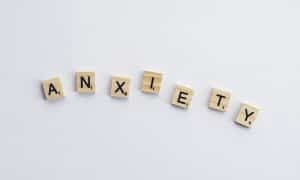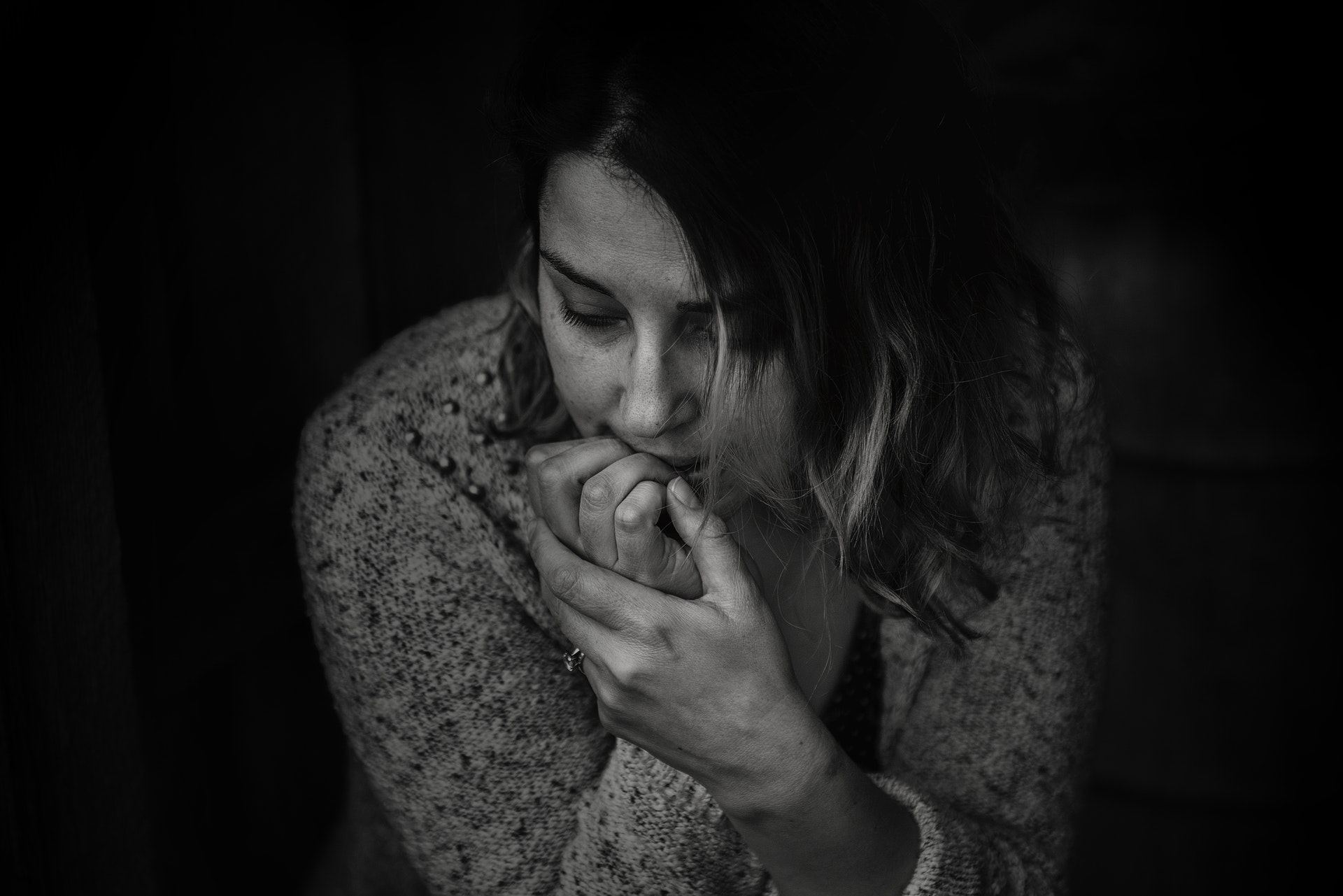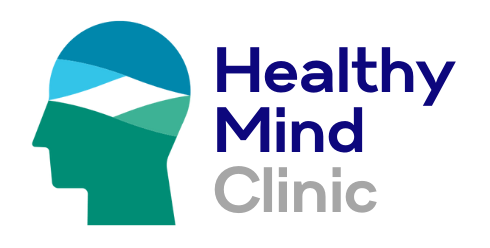
Anxiety Treatment Sydney
We all experience times of anxiety. When this is brief and in proportion to the situation, it’s usually not a problem. However, it can be a challenge when it persists, causes distress or makes daily life harder. Healthy Mind Clinic in Sydney specialises in treating problematic anxiety. If you have difficulties with anxiety, we can teach you the skills you need to improve how you feel.
What is Anxiety?

Anxiety is a part of a survival response that humans have developed to stay safe when under threat. It’s driven by the release of adrenaline, which causes helpful bodily changes to motivate us to escape from danger or avoid situations that we think could be dangerous. These bodily changes include muscles tensing in preparation for use, faster heart rate to push blood to the limbs where it’s needed and attention focusing on the threat and the path of escape. (Click here for more information on the bodily changes that come with anxiety). You may have heard this described as the fight-flight-freeze response. We feel a strong urge to avoid or escape danger during this response. It helped our ancestors survive when they lived amongst predators. When anxiety occurs like this at the right time, it’s typically not a problem (for example, if an out-of-control truck is coming towards you). In fact, some anxiety can be helpful to motivate good performance and problem-solving. An example of this might be having a job interview. It helps to have some anxiety in order to prepare and perform well.
So when does anxiety become a problem? Anxiety can be unhelpful if it continues when there is no real threat if it’s so intense that it interferes with performing well or it causes you to feel distressed, causes persistent sleep disruption or makes daily life harder. Anxiety at this level may suggest the presence of an anxiety disorder.
Signs and Symptoms of Troubling Anxiety

Anxiety is made up of responses in our body (physical), behaviours and thoughts. These can include:
Physical / Bodily Responses
- Muscle tension
- Restlessness
- Faster breathing rate and heart rate
- Butterflies or stomach discomfort
- Dry mouth
- Sweating and feeling hot
- Feeling nervous and on edge
- Disrupted sleep and concentration
Behaviours
- Withdrawing from people
- Avoiding situations due to feeling anxious
- Staying home more or staying in bed
- Relying more on alcohol or substances to cope
- Having difficulty keeping up with usual daily activities at home or work
Thoughts
- Anxiety-provoking thoughts that you wouldn’t usually believe or that you think most people wouldn’t usually think
- Catastrophic thoughts, such as:
- It will be a disaster
- I can’t cope
- They’ll think I’m incompetent
- I’ll panic and have a breakdown
- Excessive worry that is hard to stop
- Excessive thoughts of dread
Causes of Anxiety
Anxiety researchers have identified several factors that influence whether someone will develop an anxiety disorder. One influence is genetics. We find that people are more likely to have an anxiety disorder if an immediate family member has one. Another influence is a person’s temperament, which can guide how someone responds to life stress and to times of feeling anxious. Finally, a person’s life experiences also play a role. These can include experiences early in life, such as what they observed and learned from family members, right up to current experiences like work stress, life stress and significant societal events like the changes brought by the COVID19 pandemic and the Sydney lockdown. The important thing to know is that it’s not necessary to identify the causes of an anxiety disorder for it to be helpfully treated. Our clinical psychologists in Sydney have specialist expertise in treating a range of anxiety disorders to help you feel better from anxiety.
Types of Anxiety Disorders
Difficulties with anxiety are common. The last National Survey of Mental Health and Wellbeing showed that anxiety disorders are the most common type of mental health disorder in Australia. It revealed that approximately 1 in 4 people experience an anxiety disorder during their lifetime (26%) and 14% of people have an anxiety disorder in any one year. So you’re not alone if you find anxiety challenging. There are different types of anxiety disorders. This is a brief rundown:
General Anxiety Disorder (GAD)
The main difficulty in GAD is the excessive worry that feels hard to control, along with a tendency to feel anxious much of the time for several months. While many people may worry briefly from time to time, in GAD the worry feels intense, frequent and prolonged. The focus of the worry can vary but is typically about everyday events, work, the health and welfare of themselves or others, relationships, finances, the future or even global/political affairs. People with GAD often notice feeling nervous and on edge much of the time, along with irritability, fatigue, muscle tension (for example, in the back or shoulders) and find that the worry and anxiety disrupt sleep and concentration. However, not everyone will experience all of those symptoms. A common feature of excessive worry in GAD is the tendency to jump to negative conclusions about the future and the belief that worry can’t be controlled. People with GAD often find they do things to make themselves feel better like avoiding certain situations or engaging in excessive planning, checking or reassurance-seeking. Our Sydney-based psychologists have expertise in treating GAD by using scientifically supported treatment approaches (like cognitive behavioural therapy) to teach people to effectively control their worry and anxiety.
Social Anxiety Disorder (or Social Phobia)
In social anxiety disorder, peoples’ primary concern is of embarrassing themselves or being judged negatively by other people in social interactions or social performance-type situations (like public speaking). Common anxiety-provoking situations here can include speaking to unfamiliar people, speaking to authority figures, dating situations, making phone calls, being in a work or social group setting or speaking to a group. It can also include situations of being in public like eating or writing in front of others or any situation where someone feels like the centre of attention. People with Social Anxiety Disorder often feel uncomfortable before entering, and on being, in these situations. They may notice physical anxiety symptoms like feeling hot and flushed, butterflies, muscle tension, faster heart rate and breathing rate. As a result, people often avoid many of these situations or do things to make it easier to cope like avoiding eye contact, staying quiet or sticking to people they’re more familiar with.
Panic Disorder
In panic disorder, people are concerned about having a panic attack or panic-like symptoms. They are often concerned that these may occur unpredictably and may represent, or cause, a serious consequence like fainting, a heart attack or death. A panic attack is a sudden, intense physical feeling of fear or dread that appears to happen out of the blue. Features of a panic attack include multiple physical symptoms (racing heart, nausea, dizziness, shortness of breath, shaking, muscle tension, sweating, hot/cold flushes, and perceptual changes to vision and hearing), which prompt catastrophic thoughts that something is seriously wrong. They usually peak within 5-15 minutes, but then leave people feeling unwell, tired or anxious. Having a panic attack does not necessarily mean that someone has panic disorder. Rather, in panic disorder, people fear the possibility of further panic attacks or panic symptoms. As a result, they may remain anxious and be on the lookout for further panic attacks or panic symptoms and make changes to their behaviour to try to prevent panic. Examples of these behavioural changes may be avoiding exercise, sex, caffeine or hot environments.
It’s common for people with a fear of panic to also experience Agoraphobia. In Agoraphobia, people are concerned about the consequences of having a panic attack or panic symptoms and so avoid multiple situations (e.g. public transport, being alone, being outside the home, open spaces like shopping centres, crowds, or enclosed spaces like movie theatres). Common concerns include not getting help, not being able to escape or feeling embarrassed if panic symptoms occur.
Specific Phobia
In specific phobia, people experience significant fear and anxiety when in the presence of particular objects or situations. The intensity of their fear is often out of proportion to the actual level of threat present. While people realise this, they still find it understandably hard to handle the associated anxiety. As a result, people will often avoid these situations. While there are many different types of specific phobia, they typically fall into these categories:
- Animal (e.g. spiders, insects, dogs, snakes)
- Environmental (heights, water, the dark, storms)
- Medical/injury (e.g. injections, needles, seeing an injury, having a medical procedure)
- Situational (e.g. enclosed spaces like lifts, bridges, flying)
- Other (e.g. vomiting, clowns, the number thirteen)
The following conditions of OCD, PTSD and Illness Anxiety Disorder (health anxiety) are mostly currently classified separately from the other anxiety disorders by the primary diagnostic manuals such as the DSM-5 and the ICD-11. However, in everyday terms we often consider these to be a form of anxiety. This is because anxiety is a core feature and because we often use treatments similar to those for other anxiety disorders.
Obsessive-Compulsive Disorder (OCD)
The primary concern in OCD is recurrent, intrusive ideas (obsessions) that make people distressed or anxious. Examples of these concerns may be thoughts of accidentally causing harm to others, doubts about whether doors are locked or appliances turned off, germs/contamination or other thoughts that seem inappropriate. Obsessions can take the form of intrusive thoughts, mental images, memories, urges or impulses. These concerns then prompt people to engage in behavioural or mental acts, often according to personal rules, in order to reduce the distress or to prevent the obsessional concerns from coming true. These behavioural and mental acts are referred to as compulsions. Examples of compulsions can include repeated checking, cleaning/handwashing, counting or engaging in certain routines or “rituals.”
If people find that obsessions or compulsions cause significant distress or get in the way of daily activities, then it might suggest OCD. It’s possible to have OCD even if someone only experiences obsessions or compulsions, but most of the time people with OCD experience both.
Some of the common forms that OCD can take include:
- Concerns of germs and contamination prompting washing/cleaning compulsions
- Fear of accidentally causing harm to others causing avoidance and ritualising
- Fear of sexually inappropriate thoughts causing avoidance and ritualising
- Excessive doubt (e.g. about leaving doors unlocked or appliances on, or having unintentionally said something to offend someone) and compulsive checking or prevention
However, OCD is highly individual so the way someone experiences it may be different from the forms above.
Illness Anxiety Disorder (Health Anxiety)
In Illness Anxiety Disorder (health anxiety or hypochondriasis) people are concerned that they have or will develop a serious health condition. This is more than an occasional concern. Rather, it feels like a preoccupation. Example concerns may be having or developing cancer, HIV, a serious heart problem or another serious illness. This causes people to experience significant anxiety and to engage in behaviours like checking and monitoring themselves for symptoms, checking the internet for health-related information, repeated visits to the doctor and seeking medical tests for reassurance. While people find that these behaviours may bring temporary relief in anxiety and worry about health, the anxiety comes back when they next notice a particular symptom or have a health-related worry.
Posttraumatic Stress Disorder (PTSD)
PTSD can occur after exposure to a traumatic event. A traumatic event is a situation in which there is a severe physical threat, which risks or causes injury or death. People may be exposed to traumatic events by experiencing them directly, witnessing them, learning of them happening to a close friend or family member, or repeatedly encountering the details of the traumatic event. Examples of traumatic events include car accidents, work or industrial accidents, physical or sexual assault, combat and natural disasters. The traumatic event may be discrete or may have happened repeatedly over time. Common features of PTSD include experiencing the memory of the trauma in an unwanted, distressing way (e.g. through nightmares or flashbacks), increased anxiety and physical arousal, efforts to avoid the memory and its reminders, and negative mood and thinking. Click here for more information about PTSD and traumatic stress.
Treatment of Anxiety Disorders
The good news is that difficult anxiety can be helpfully handled so that you can feel better. One of the most effective approaches is cognitive behavioural therapy (CBT). This is a ‘talk-based’ therapy that teaches people skills to handle thinking and behaviour in a new way to overcome anxiety. This can include ways to handle negative thoughts that prompt anxiety and learning ways to conquer situations that cause anxiety. It may include mindfulness-based skills and relaxation approaches. The aim is to learn ways to master anxiety. CBT involves regular meetings with a therapist to learn skills to overcome anxiety plus practice implementing these skills between meetings. Many people find this a practical, helpful way to handle their anxiety and is a preferred treatment for many people. CBT can also be provided online. Our Sydney-based psychologists often use online CBT treatment tools as an addition to working with people face-to-face.
Medication may also be used to help people with anxiety. One of the common types of medications used to help anxiety is called a selective serotonin re-uptake inhibitor (SSRI). It can be helpful sometimes to pair medication with CBT. It’s important to be aware of possible side effects when considering medication. You should speak to your GP or another doctor to find out more.
Self-care
Using basic self-care is also helpful to reduce anxiety and to complement other treatments like CBT. You may find some of these self-care tips helpful:
- Maintain a healthy and balanced diet – try to keep up with regular meals
- Use regular physical activity – for example, 20-30 minutes of exercise each day
- Try to keep a regular sleep schedule and get sufficient sleep
- Stay connected with trusted people and seek support when you feel you need to
- Avoid alcohol and substances as a way to cope
- Each day try to allow yourself time to do something you’d usually find relaxing or enjoyable
Our Services
Our clinical psychologists at Healthy Mind Clinic have expertise in helping people with problematic anxiety. We specialise in providing CBT for anxiety. (Click here for more information on the experience and expertise of our principal clinical psychologist and clinic director, Dr Adrian Allen.) We’ll work with you to understand specifically how anxiety is affecting you, agree to goals that you’d like to achieve in overcoming anxiety, and then develop an individual treatment plan with you. From there, we’ll teach you the skills you need to better handle anxiety to help you achieve your treatment goals.
Anxiety Treatment Clinic in Sydney, CBD
If you’re experiencing difficulties with anxiety and want to learn effective ways to overcome this, we’re here to help. Please contact us to arrange an appointment. We look forward to working with you to reduce your anxiety and enhance your well-being.
Enquire about an initial appointment
Our practise offers appointments on Mondays to Thursdays. Reception is available Monday to Friday. We offer some appointments outside usual business hours in order to be as accessible as possible. We will respond to you as soon as possible.
